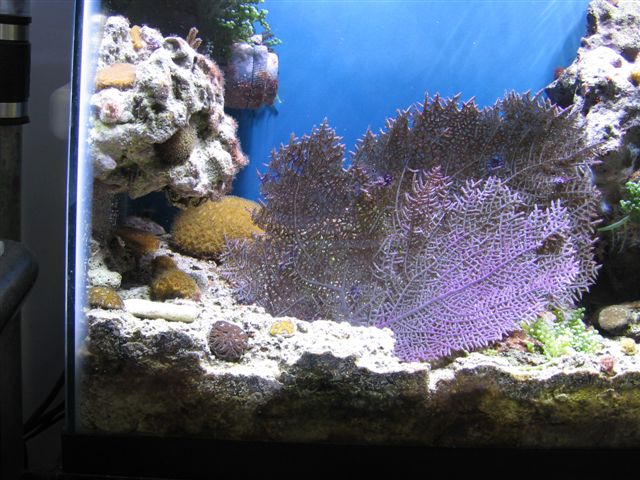meandean45
Active Member
Hello Everyone!
Back again with some thoughts/ questions .
.
I've been away from the Boards for a couple of years now, and have noticed since I got back that a lot of people seem to be doing the Bare Bottom (BB) thing again. Back in the days when I first entered the Reef keeping hobby (freshwater before that, Man! I'm getting OLD !) BB, or the "Berlin System" was considered the only way to go. My LFS at the time convinced me to "Put some crushed coral in, to keep the calcium and pH up":laughroll!!! Needless to say, I had a really good detritus trap, and very soon I had an AMAZING crop of hair algae (and NO, it didn't help with the pH or calcium
!) BB, or the "Berlin System" was considered the only way to go. My LFS at the time convinced me to "Put some crushed coral in, to keep the calcium and pH up":laughroll!!! Needless to say, I had a really good detritus trap, and very soon I had an AMAZING crop of hair algae (and NO, it didn't help with the pH or calcium ) In all fairness, he didn't know any more about Reefs than I did, his SW experience was fish only.
) In all fairness, he didn't know any more about Reefs than I did, his SW experience was fish only.
So, along comes the craze for DSB's. Yup, I dove in head first. What a PITA it was to remove everything from the tank to get the CC out. I remember it like it was yesterday. However, once I got the sand bed seeded with live sand (Thanks Teri), and everything back into my tank, my algae problem promptly disappeared. I was as happy as a clam at high tide !
!
Now I'm hearing some dreadful things about DSB's, like that they are detritus traps or may be the cause of OTS:bugout:, so now I'm beginning to wonder if maybe a BB isn't the way to go.
Questions: Is it harder to keep your' water chemistry balanced in a BB tank?
Will I have nitrogen cycle problems if I do away with all that live sand?
Doesn't the detritus build up in/under the live rock anyways?
Will my Nitrate level build up faster? It did slow down considerably after the DSB matured.
I guess that the $64000 question would be: If my reef's doing well with the DSB, is there any real reason (besides that detritus is more easily removed) that I should remove my DSB?
Thanks to any and all for any advice or input you can give me.
Dean
Back again with some thoughts/ questions
I've been away from the Boards for a couple of years now, and have noticed since I got back that a lot of people seem to be doing the Bare Bottom (BB) thing again. Back in the days when I first entered the Reef keeping hobby (freshwater before that, Man! I'm getting OLD
 ) In all fairness, he didn't know any more about Reefs than I did, his SW experience was fish only.
) In all fairness, he didn't know any more about Reefs than I did, his SW experience was fish only.So, along comes the craze for DSB's. Yup, I dove in head first. What a PITA it was to remove everything from the tank to get the CC out. I remember it like it was yesterday. However, once I got the sand bed seeded with live sand (Thanks Teri), and everything back into my tank, my algae problem promptly disappeared. I was as happy as a clam at high tide
Now I'm hearing some dreadful things about DSB's, like that they are detritus traps or may be the cause of OTS:bugout:, so now I'm beginning to wonder if maybe a BB isn't the way to go.
Questions: Is it harder to keep your' water chemistry balanced in a BB tank?
Will I have nitrogen cycle problems if I do away with all that live sand?
Doesn't the detritus build up in/under the live rock anyways?
Will my Nitrate level build up faster? It did slow down considerably after the DSB matured.
I guess that the $64000 question would be: If my reef's doing well with the DSB, is there any real reason (besides that detritus is more easily removed) that I should remove my DSB?
Thanks to any and all for any advice or input you can give me.
Dean



